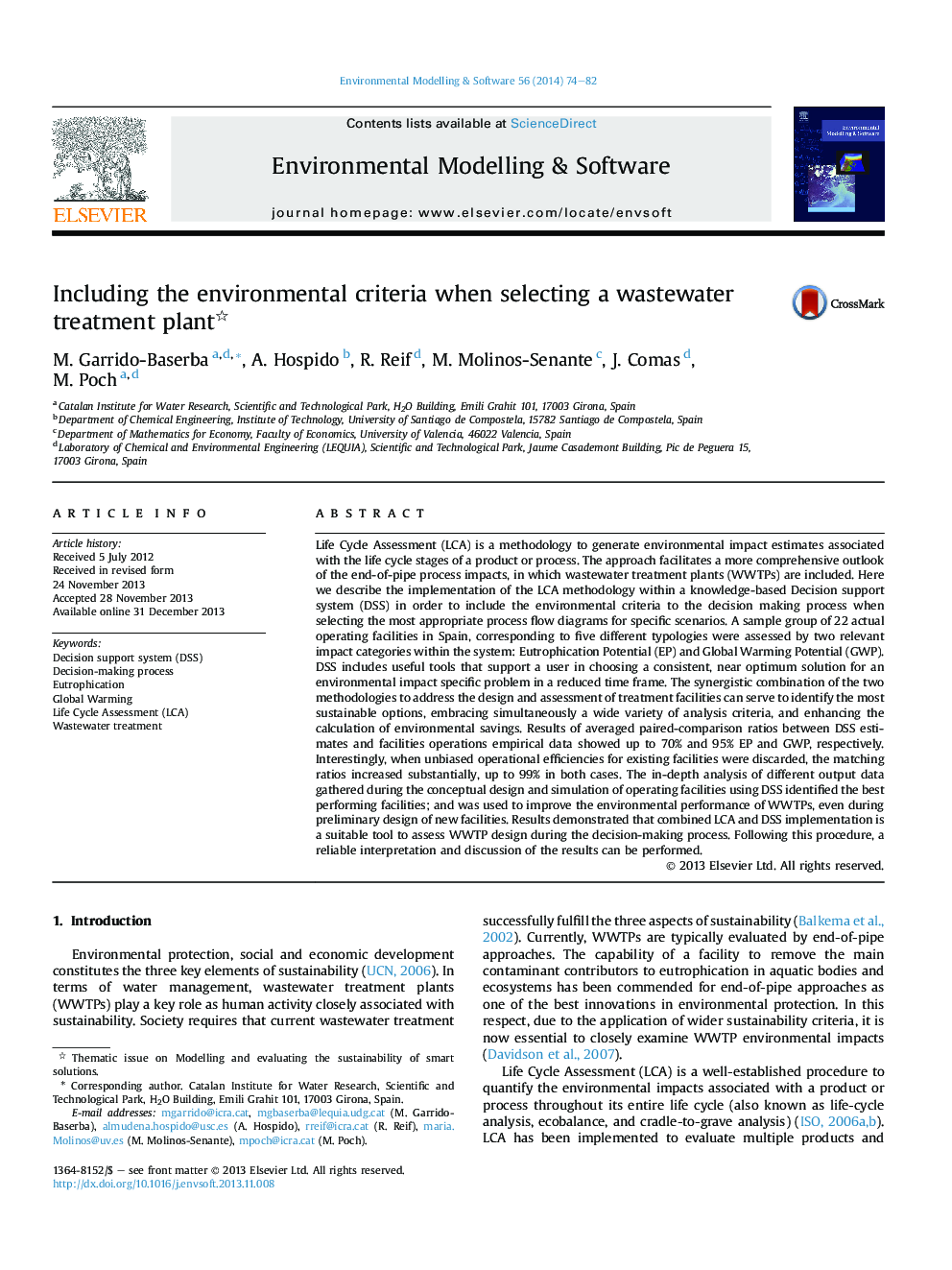| Article ID | Journal | Published Year | Pages | File Type |
|---|---|---|---|---|
| 568474 | Environmental Modelling & Software | 2014 | 9 Pages |
•The integration of an LCA has been applied to 22 WWTPs.•WWTPs were evaluated using two LCA categories: Eutrophication and Global Warming.•Matching ratios increased when unbiased operational efficiencies were discarded.•The paired-comparison allows the identification of the best performing facilities.•Combining LCA and DSS is a suitable tool to improve the decision-making.
Life Cycle Assessment (LCA) is a methodology to generate environmental impact estimates associated with the life cycle stages of a product or process. The approach facilitates a more comprehensive outlook of the end-of-pipe process impacts, in which wastewater treatment plants (WWTPs) are included. Here we describe the implementation of the LCA methodology within a knowledge-based Decision support system (DSS) in order to include the environmental criteria to the decision making process when selecting the most appropriate process flow diagrams for specific scenarios. A sample group of 22 actual operating facilities in Spain, corresponding to five different typologies were assessed by two relevant impact categories within the system: Eutrophication Potential (EP) and Global Warming Potential (GWP). DSS includes useful tools that support a user in choosing a consistent, near optimum solution for an environmental impact specific problem in a reduced time frame. The synergistic combination of the two methodologies to address the design and assessment of treatment facilities can serve to identify the most sustainable options, embracing simultaneously a wide variety of analysis criteria, and enhancing the calculation of environmental savings. Results of averaged paired-comparison ratios between DSS estimates and facilities operations empirical data showed up to 70% and 95% EP and GWP, respectively. Interestingly, when unbiased operational efficiencies for existing facilities were discarded, the matching ratios increased substantially, up to 99% in both cases. The in-depth analysis of different output data gathered during the conceptual design and simulation of operating facilities using DSS identified the best performing facilities; and was used to improve the environmental performance of WWTPs, even during preliminary design of new facilities. Results demonstrated that combined LCA and DSS implementation is a suitable tool to assess WWTP design during the decision-making process. Following this procedure, a reliable interpretation and discussion of the results can be performed.
Graphical abstractFigure optionsDownload full-size imageDownload as PowerPoint slide
